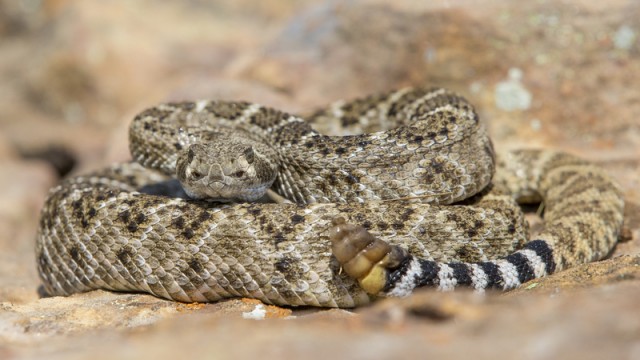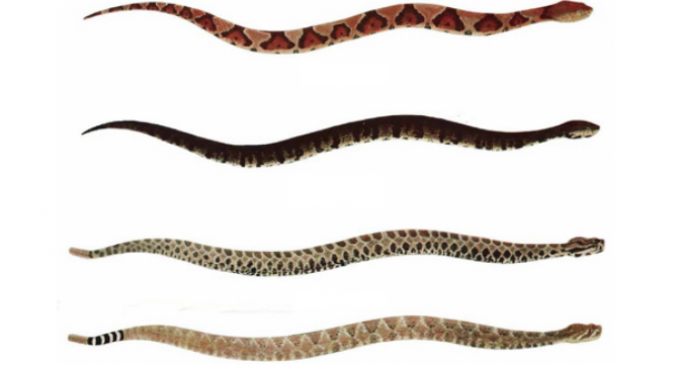The western diamond-backed rattlesnake is a bigger one, so it can be easier to spot, but that doesn’t mean it’s safe to get close to one! Like its relatives, this rattler blends in with its surroundings and is mostly encountered around late summer and early fall.
4 -Western Diamond-Backed Rattlesnake

WESTERN DIAMOND-BACKED RATTLESNAKE (Crotalus atrox). Length 4-5 feet, although some are larger. In the United States, probably more deaths are caused by this snake than by any other. A combination of large size, wide distribution, abundance, and touchy temperament give this distinction to this snake. It is rather common in Oklahoma, just south of this region. The diamond-back prefers dry open plains and canyons, where it feeds upon small rodents, young rabbits, and occasionally, birds. The ground color varies somewhat from buff to gray; the snake generally has a faded appearance. The black and white tail bands are distinctive.
About ten young are born in late summer or early fall. Larger litters have been recorded. The young are fully capable of inflicting a dangerous bite as soon as they are born – and quite willing to do so!
At least the diamond-back tends to live in the wilderness, but next on our list is a snake that feels at home living close to human habitations! Not only may you encounter this snake near in the woods, it may also be found near your home! Learn how to identify it and find out just how dangerous this snake is!

Don’t forget… Babies have the worst bite… They don’t hold back and inject all their venom.
Nope Rope #1 thru 4
Good eating right there
Amber O’Daniel Adri definitely needs to pay attention. I know she likes snakes but she has to be careful. It’s good she’s not terrified like me but still. She needs to be able to tell the difference and learn safe handling.
She don’t care i think she lying anyway cause hell even a pro snake catcher has mistakes. She aint no pro